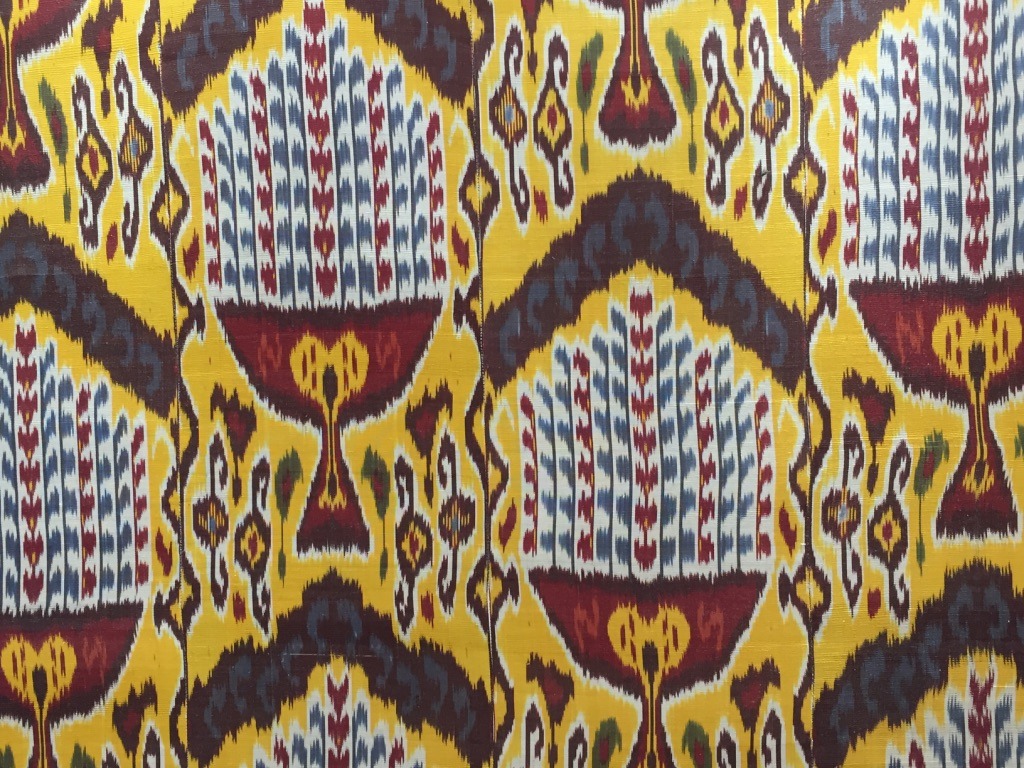
Menu

Ikat weaving is one of Uzbekistan’s most iconic textile traditions, celebrated for its bold patterns, vibrant colors, and intricate dyeing process. Known locally as “abrbandi,” which means “to tie a cloud,” the term poetically reflects the complex resist-dyeing method used to create these stunning fabrics.
The process begins by tightly tying sections of silk or cotton threads before dyeing them in succession. This results in a characteristic blurred edge that gives ikat its ethereal, dreamlike quality. Once dyed, the threads are woven into fabrics that showcase geometric, floral, or abstract designs.
The Fergana Valley is the heartland of ikat weaving, with centuries-old workshops still in operation. Master weavers pass down their skills through generations, preserving both the artistic style and the cultural meaning behind each pattern. These motifs often carry symbolic messages about nature, spirituality, and protection.
In recent years, Uzbek ikat has gained global attention. Designers from Milan to New York have incorporated ikat textiles into high fashion, elevating the traditional craft to international runways. Despite this modern popularity, the essence of ikat remains deeply Uzbek, reflecting a culture that values craftsmanship, heritage, and beauty.



